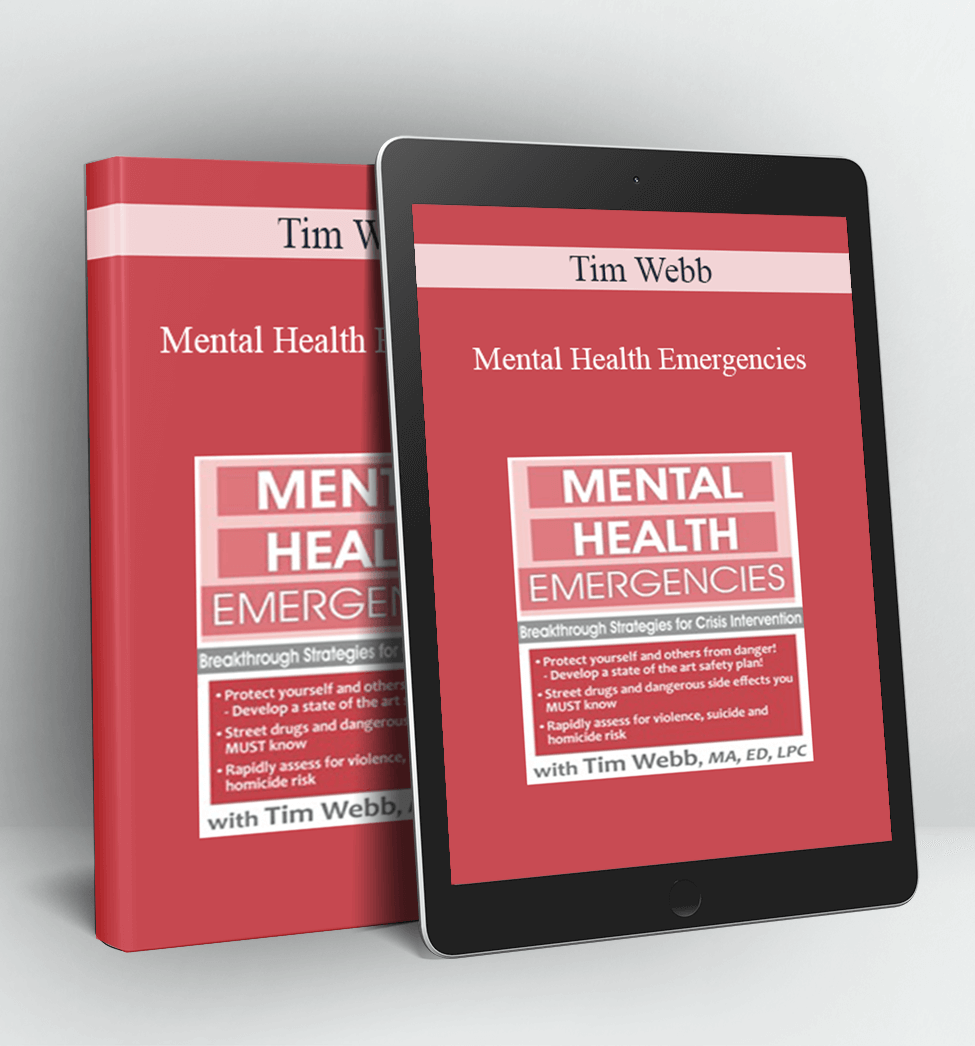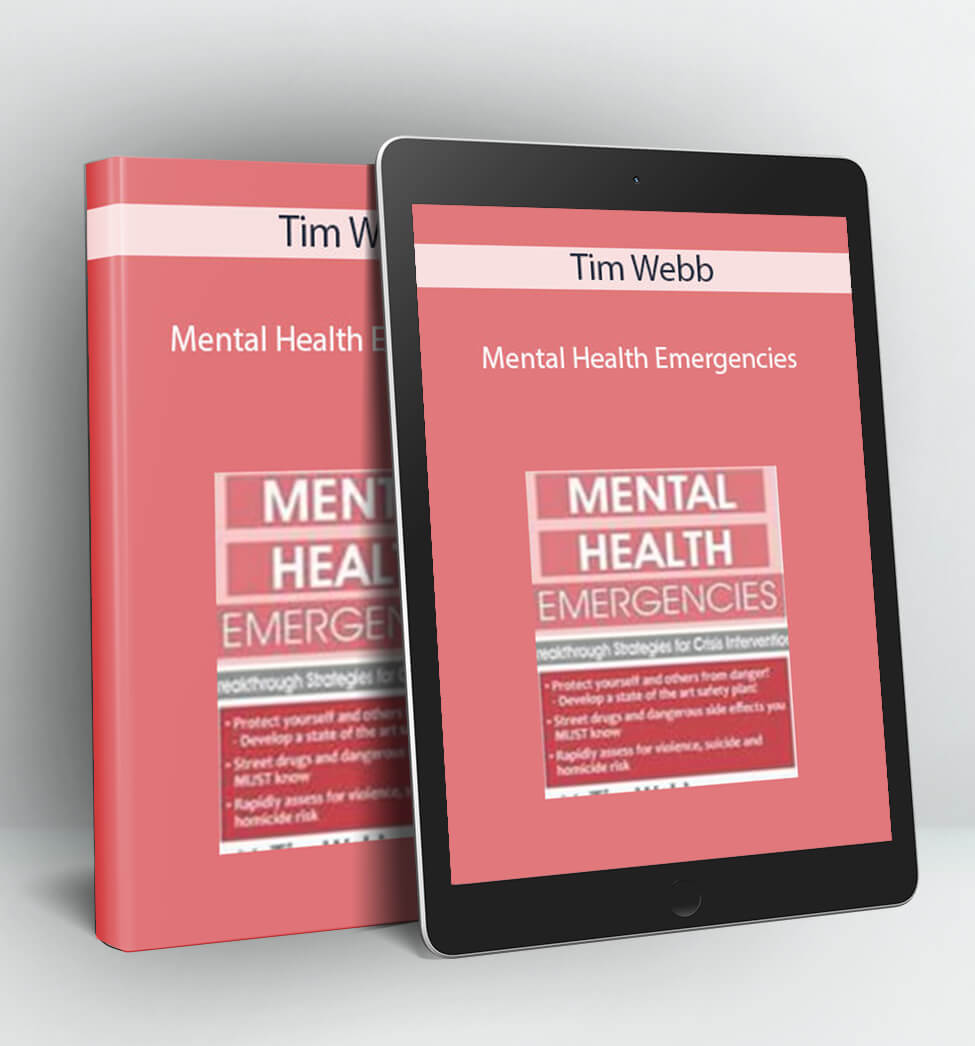Completing the Mental Status Exam: Practical, Hands-On Lessons from the Field – Tim Webb
Perform and Document the MSE Correctly to Improve Treatment and Liability Protection
Completing the mental status exam is the most important task assumed by any behavioral health clinician. Accurate evaluation can be difficult because psychiatric symptoms often mask life-threatening substance withdrawal and/or serious medical conditions including brain tumors, delirium, head injury, diabetes, thyroid disease, etc. However, many graduate programs do not teach clinicians enough about recognizing and differentiating such symptoms. An accurate and efficient MSE is essential to discerning the patient’s true condition, developing an effective treatment plan, and, in extreme cases, saving his or her life.
This practical recording will help you improve your ability to perform the MSE by teaching you critical information generally not covered in graduate school as well as the American Psychiatric Association (APA) guidelines on the necessary elements for a full examination. Instruction on proper evaluation and keys to differential diagnosis will be a central theme of the recording. Included will be information on the assessment of various psychotic symptoms and how to understand their etiology, the use of drug and alcohol screens, clients’ medication lists, and more.
You’ll discover ways of quickly assessing clients at risk for suicide, homicide, and medical compromise. Additional discussion will focus on the role of various information sources for accurate assessment of patients in each age group, including lab values, family members, and medical records. Ultimately, this essential recording will teach you to perform and document the MSE correctly and efficiently to improve both clinical care and liability protection.
- Utilize multiple sources of information in considering differential diagnoses and determine how to apply this information in clinical practice
- Assess psychotic symptoms and determine if they indicate psychiatric, substance abuse, or medical illness
- Administer evaluative tools appropriately and understand their utility in the clinical setting
- Determine which questions to ask, observations to make, and elements to assess in clients according to American Psychiatric Association guidelines
- Evaluate risk for suicide and violence quickly and effectively, and apply this knowledge in clinical practice
- Differentiate mental health conditions from substance abuse and medical presentations
- Discuss the professional, ethical, and legal guidelines to be followed when conducting the MSE and recommending treatment
APA GUIDELINES ON NECESSARY ELEMENTS
- Differences in mood and affect
- When to ask open-ended vs. closed-ended questions
- When to become more directive, structured and observational
- Speech abnormalities and differential diagnosis
- Role of sleep and mood
- Role of appetite and mood
COMPONENTS OF A MORE COMPREHENSIVE MENTAL HEALTH SCREENING
- Sources of information
- Client medication list
- Family members and friends
- Alcohol and drug screens
- Other providers
- Medical records
- Documentation
- Special populations
ASSESS AND UNDERSTAND PSYCHOTIC SYMPTOMS
- Importance of distinguishing auditory hallucination type
- Relationship of visual hallucinations and medical conditions
- Hallucinations and substance abuse
- Importance of type of delusions on differential diagnosis
- Recognizing the over-medicated patient
- Determining legal competency to make decisions
- Case studies and scenarios
KNOWING WHICH TOOLS TO EMPLOY
- Using and scoring common evaluative tools
- St. Louis University Mental Status Examination (SLUMS)
- Folstein Test/Mini-Mental Status Exam (MMSE)
- Clinical Institute Withdrawal Assessment (CIWA)
- Suicide/Self-Harm Scale
APA GUIDELINES ON NECESSARY ELEMENTS
- Differences in mood and affect
Salepage: https://catalog.pesi.com/item/completing-mental-status-exam-practical-handson-lessons-field-35076
PLEASE REFER TO OUR PROOF : WATCH HERE!
” frameborder=”0″ allowfullscreen=”allowfullscreen” data-mce-fragment=”1″>
Delivery Method:
After your purchase, you’ll get access to the downloads page. Here, you can download all the files associated with your order.
Downloads are available once your payment is confirmed, we’ll also send you a download notification email separate from any transaction notification emails you receive from Coursedownloads.









